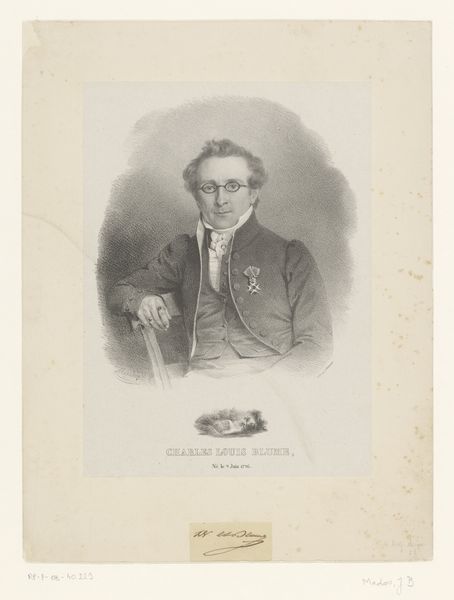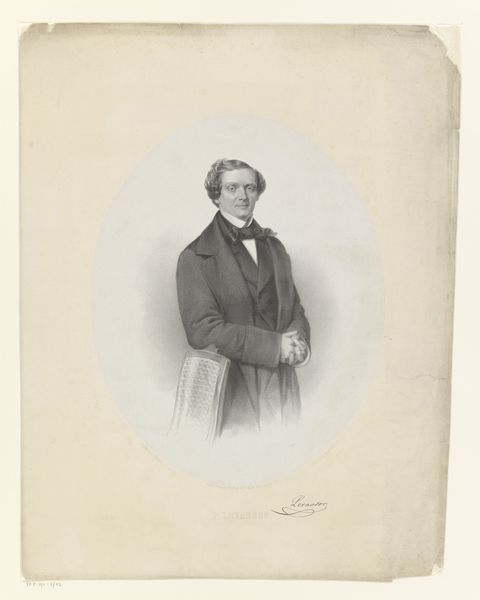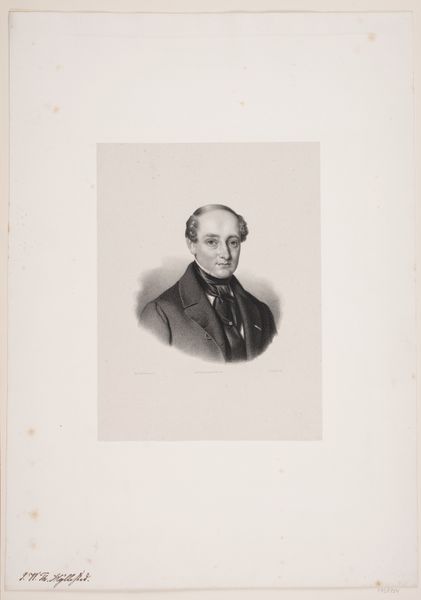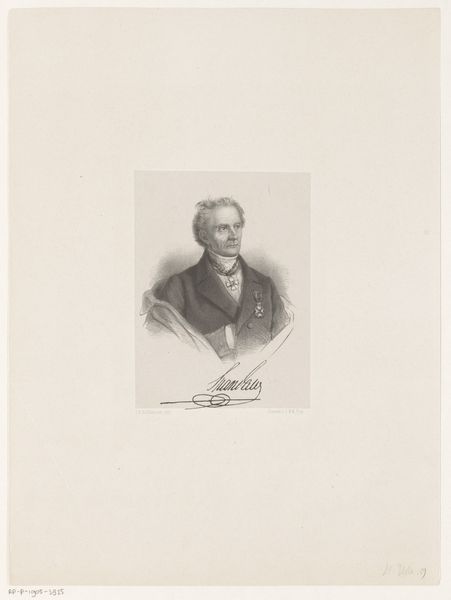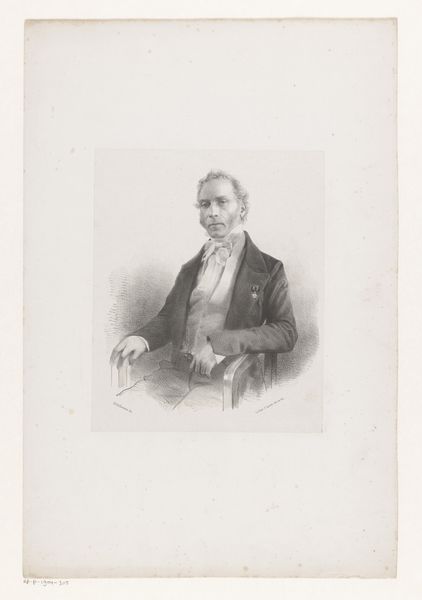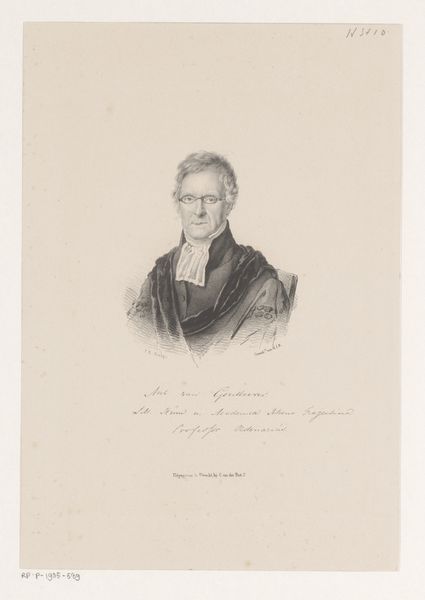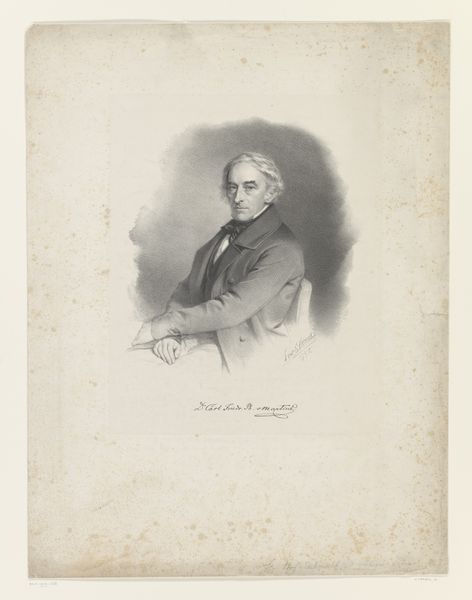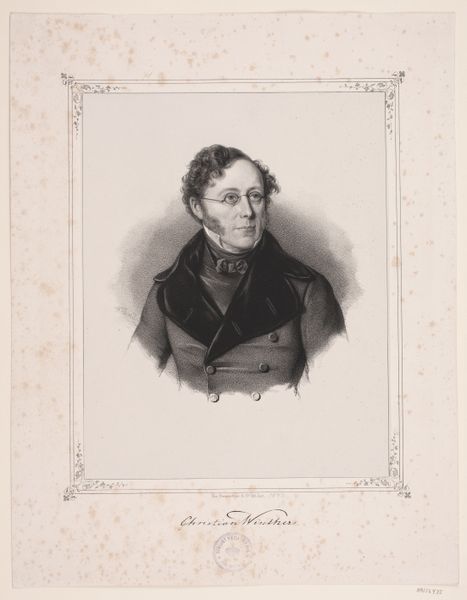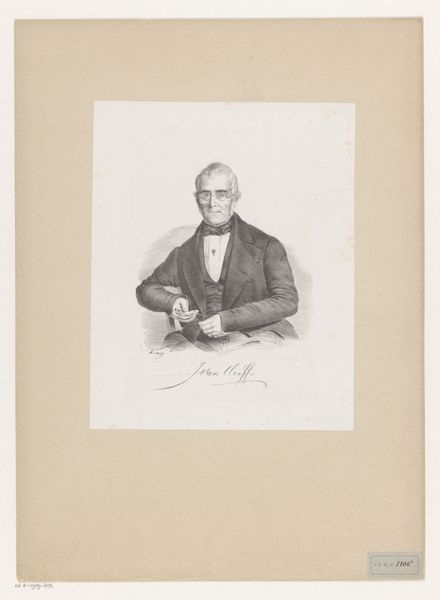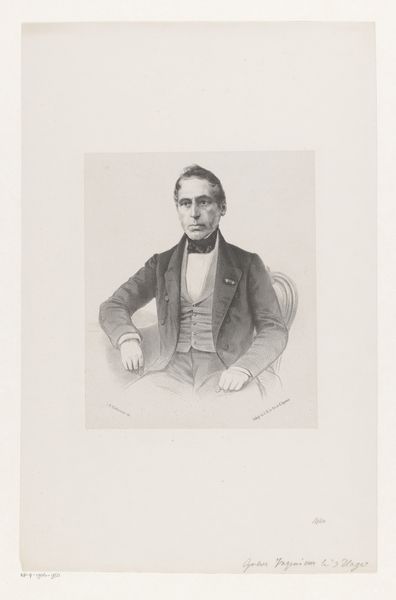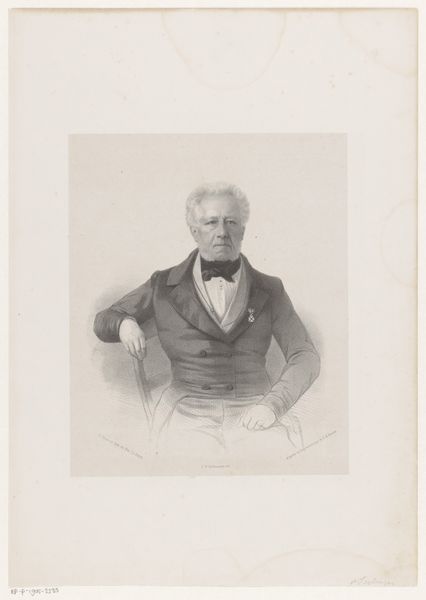
drawing, graphite
#
portrait
#
drawing
#
graphite
#
academic-art
#
realism
Dimensions: height 477 mm, width 336 mm
Copyright: Rijks Museum: Open Domain
Editor: So, here we have a graphite drawing titled "Portret van Abraham Johannes Romswinckel," dating between 1827 and 1898, currently at the Rijksmuseum. It feels very…stiff, almost staged. The man’s pose is so formal. What strikes you when you look at it? Curator: What I see are layers of societal influence shaping the work itself. Look at the graphite: how was it sourced, processed, and distributed? Its availability reflects trade routes and colonial exploitation of resources. Consider the paper, its manufacturing… Editor: So you're less focused on Romswinckel himself? Curator: Exactly. Who commissioned this work, and what message were they trying to convey through this carefully constructed image, in terms of their own social and economic status? Every material decision tells a story about labor, access, and power dynamics. Even the simple act of applying graphite to paper becomes a complex statement. Editor: I guess I was thinking more about the artist's intention… Curator: But where did the artist acquire these skills? Through academic training? The formal conventions—the pose, the clothing—they aren’t neutral. They represent established hierarchies and ways of seeing, so think of the drawing itself as an object produced within, and shaped by, these structures. Editor: That's a very different way of approaching a portrait. It's almost like the man is secondary to everything *around* him. Curator: Precisely. It’s about understanding art as the product of material forces and social relations, as opposed to pure, individual genius. Editor: I see. So it's less about "who" and more about "how" and "why" this image came to be. Thank you, I appreciate this insightful perspective! Curator: My pleasure. Always consider the conditions of artistic production, and you'll unlock new dimensions of meaning.
Comments
No comments
Be the first to comment and join the conversation on the ultimate creative platform.

